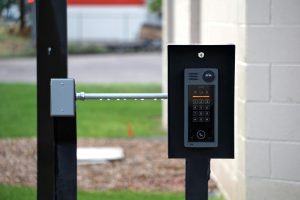Autonomous Delivery Vehicles: Reshaping Urban Logistics
In recent years, autonomous vehicles have been making headlines as a game-changing technology in the transportation industry. While most of the focus has been on self-driving cars, the use of autonomous delivery vehicles (ADV) is proving to be just as revolutionary. With urban logistics becoming increasingly complex and inefficient, ADVs are reshaping the way goods are delivered in cities. In this article, we will explore how ADVs are transforming urban logistics and the potential impact they could have on our daily lives.
The Rise of Autonomous Delivery Vehicles
The concept of autonomous delivery vehicles is not new. Companies like Amazon, UPS, and DHL have been experimenting with delivery drones and robots for years. However, recent advancements in technology, particularly in the areas of artificial intelligence and sensors, have made it possible for ADVs to operate safely and efficiently in urban environments.
One of the main factors driving the adoption of ADVs is the increasing demand for faster and more efficient delivery services. With the rise of e-commerce, same-day and even same-hour delivery have become the norm. Traditional delivery methods, such as trucks and vans, are struggling to keep up with this demand, resulting in traffic congestion, air pollution, and high delivery costs. ADVs, on the other hand, can navigate through traffic more efficiently and have lower operating costs, making them a more attractive option for businesses.
Reshaping Urban Logistics
Improved Speed and Efficiency
The use of ADVs is expected to significantly improve the speed and efficiency of last-mile delivery, which is the final leg of the delivery process from the distribution center to the recipient’s door. With ADVs, delivery companies can use a combination of drones, robots, and autonomous vehicles to streamline and optimize the delivery process. For example, drones can deliver small packages directly to a customer’s doorstep, while larger items can be delivered by autonomous trucks or vans.
This multi-faceted approach to delivery can help reduce delivery times and costs, as well as minimize the need for human intervention. ADVs can also operate 24/7, which means no more waiting for a delivery during specific hours or dealing with missed deliveries.
Reduced Carbon Footprint
The use of ADVs can also have a significant impact on reducing the carbon footprint of urban logistics. As ADVs are powered by electricity, they produce zero emissions, unlike traditional delivery vehicles that run on fossil fuels. With the increasing focus on sustainability and the growing concern over climate change, ADVs could be a crucial step towards creating a more eco-friendly and sustainable delivery system.
In addition, ADVs can also help reduce traffic congestion, which is a major contributor to air pollution in cities. With ADVs using AI and sensors to navigate through traffic more efficiently, there will be fewer delivery vehicles on the road, resulting in less congestion and cleaner air.
Challenges and Concerns
While the potential benefits of ADVs are significant, there are also some challenges and concerns that need to be addressed. One of the main concerns is the safety and reliability of ADVs, as any malfunctions or accidents could have serious consequences. To address this, companies are investing heavily in research and development to ensure that ADVs can operate safely and efficiently in all weather conditions and scenarios.
Another concern is the potential impact on the job market. With the introduction of ADVs, some jobs in the traditional delivery sector may become obsolete. However, the rise of ADVs is also creating new job opportunities in areas such as engineering, data analysis, and maintenance.
The Future of Urban Logistics
As technology continues to evolve, the potential applications for ADVs in urban logistics are endless. From grocery deliveries to medical supplies and even public transportation, ADVs have the potential to revolutionize the way goods are delivered in cities. However, for ADVs to become a widespread reality, there are still many challenges that need to be overcome, including regulatory issues, public acceptance, and infrastructure requirements.
Nevertheless, with the rapid advancements and investments in this technology, it is clear that ADVs are transforming urban logistics and are set to become an integral part of our daily lives in the not-too-distant future.
Conclusion
The use of autonomous delivery vehicles is reshaping the way goods are delivered in urban areas, with the potential to improve speed, efficiency, and sustainability. While there are still challenges and concerns to be addressed, ADVs are paving the way for a more efficient and eco-friendly urban logistics system. With continued advancements and investments, we can expect to see ADVs become a common sight on the streets in the near future.



